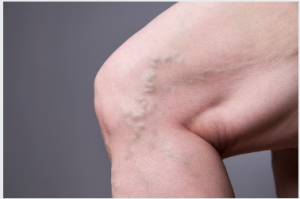There are many ways to get rid of varicose veins, including surgery and sclerotherapy. Learn about the different methods, including Ultrasound-guided foam sclerotherapy, Endovenous catheter ablation, and Stab avulsion phlebotomies.
 Sclerotherapy
Sclerotherapy
Sclerotherapy for www.odysseyveinclinic.com.au varicose Vein removal Adelaide offers a variety of treatment options for patients seeking relief from varicose veins. These treatments are minimally invasive, and most do not involve surgery or recovery time. These treatments are performed by a highly trained varicose vein specialist, Dr Zil Yassine. He completed his specialist training in Sydney, Australia, and has received an American Board of Venous and Lymphatic Medicine certification.
Varicose veins can be quite painful, particularly in the legs. They can also cause itchiness and discolouration of the skin.
Early treatment is critical in avoiding complications. In addition to cosmetic improvements, the treatment can help patients avoid painful leg ulcers.
Sclerotherapy for varicose Vein Removal Adelaide uses ultrasound technology to identify faulty veins. A sclerosant is then injected into them. The substance destroys the vein’s lining and shrinks the vein walls. The procedure is highly effective and safe, but Medicare doesn’t cover it. For this reason, it is important to consult your doctor before beginning any treatment.
Endovenous catheter ablation
If you suffer from varicose veins, there are several options for treatment. These include non-surgical procedures, which can be a good option if you do not want to undergo surgery. However, it is important to consider the cost and risks associated with the procedure.
The most common method of treating varicose veins is endovenous ablation. It involves placing chemical solutions in the veins. These solutions shrink the veins and allow blood to flow better. After the procedure, patients are advised to wear compression stockings for several weeks. Although some patients experience discomfort, the varicose veins usually disappear within a year. In some cases, more than one treatment is required to eliminate the problem.
In many cases, this treatment will require a general anaesthetic. Before starting the procedure, an ultrasound scan will be used to mark the affected veins. Next, a small flexible wire is inserted into the vein, and a thin tube is inserted over the wire. Next, a radiofrequency or laser probe will be threaded through the tube. Then, a local anaesthetic is injected around the vein to relieve pain. After the procedure, the probe is removed.
Ultrasound-guided foam sclerotherapy
Ultrasound-guided foam scLEROtherapy is a procedure that uses ultrasound pulses to locate abnormal veins and inject a sclerosant solution to cause their collapse. The procedure may require two to four injections, depending on the severity of the varicose veins and the patient’s overall condition. The entire procedure takes less than an hour.
The first step in this procedure is a thorough duplex ultrasound examination. This process creates a virtual map of the veins in the legs and helps the phlebologist identify any abnormal veins and their underlying structures. It helps the doctor pinpoint the correct treatment position.
Ultrasound-guided foam sclerotherapy is a safe procedure for patients with recurrent varicose veins. Results are usually immediate and satisfactory. However, some patients may be at risk for superficial thrombophlebitis.
Stab avulsion phlesectomies
Stab avulsion phlesectomies for varicose veins are not a common surgical procedure anymore. The modern alternative to stab avulsion phlebectomy involves using radio waves to deliver high-frequency heat to the faulty vein. The www.odysseyveinclinic.com.au varicose vein removal Adelaide procedure is safe and requires minimal recovery time. It can be used to remove both small and large varicose veins. The procedure is also known for its minimal pain and bruising.
In this procedure, the surgeon makes tiny incisions (less than one centimetre long) in the leg. After dividing the varicose veins, the surgeon will stitch up the legs and apply bandages to reduce the bruising. Most patients will be able to return to work the following day. Again, there will be minimal pain during the recovery period.
Another popular option for removing varicose veins is a surgical procedure called a phlebectomy. This procedure is often combined with other treatments and is usually performed in a doctor’s office. Although this procedure is considered the most effective way to get rid of varicose veins, it comes with its risks.